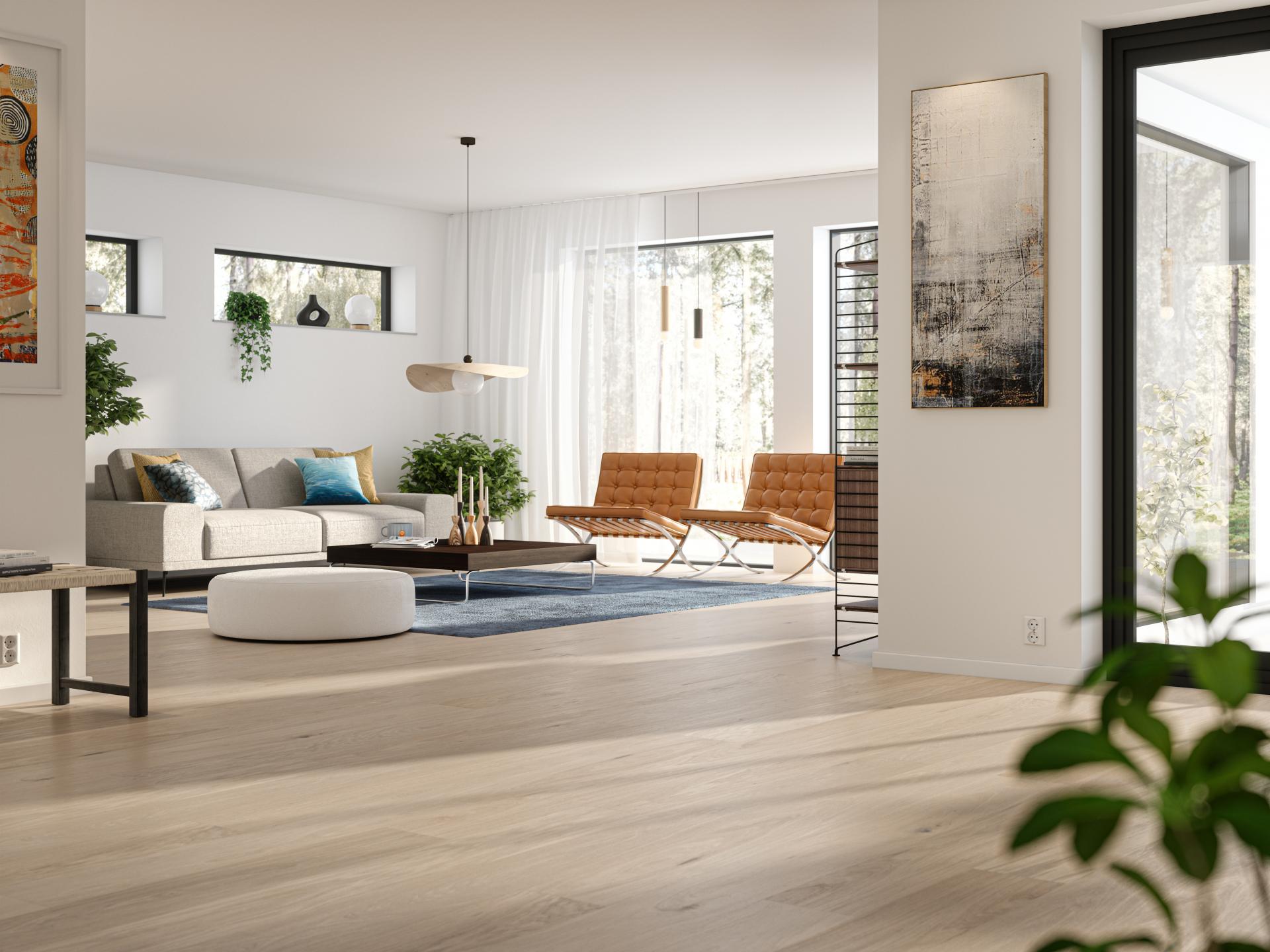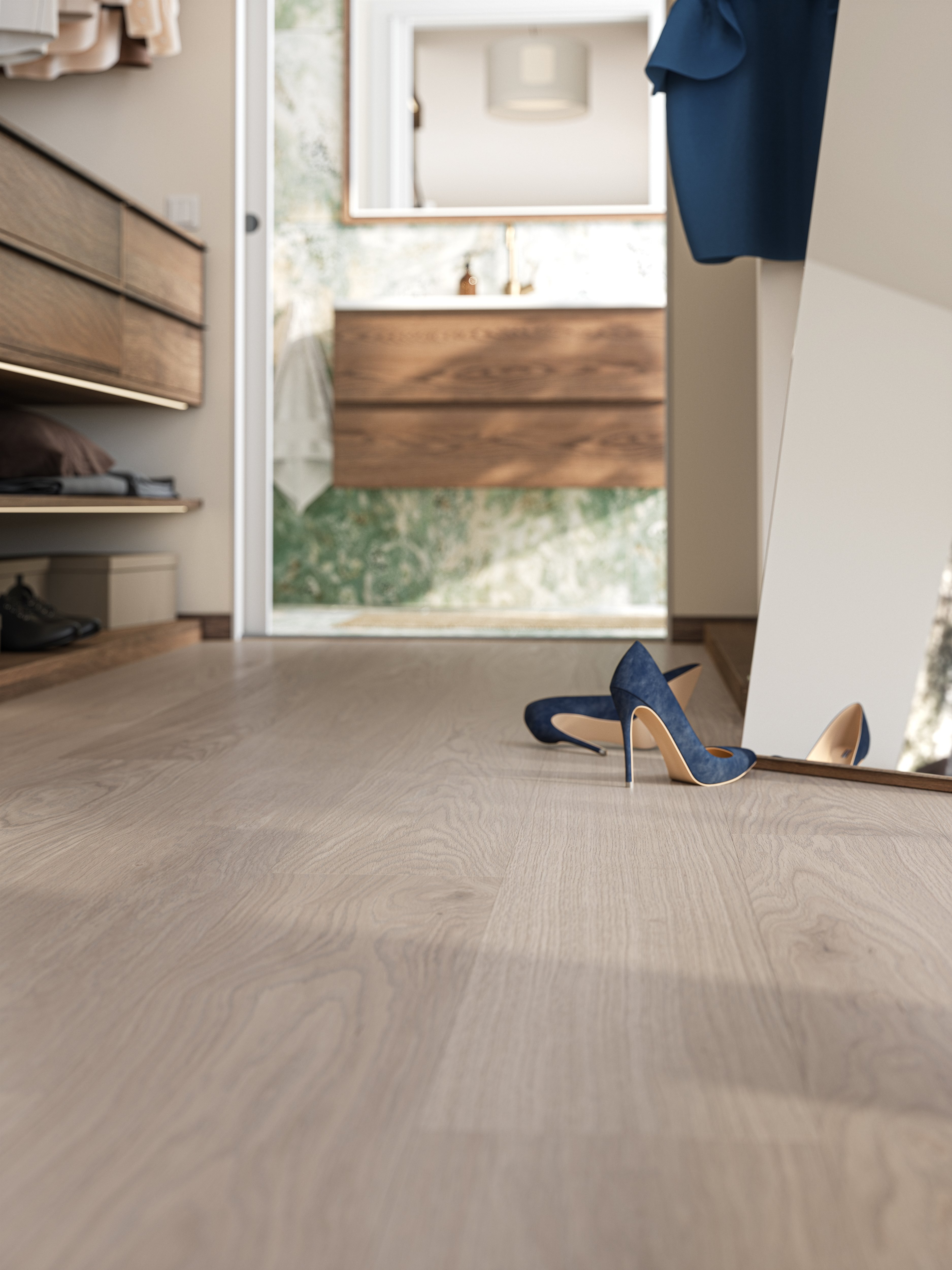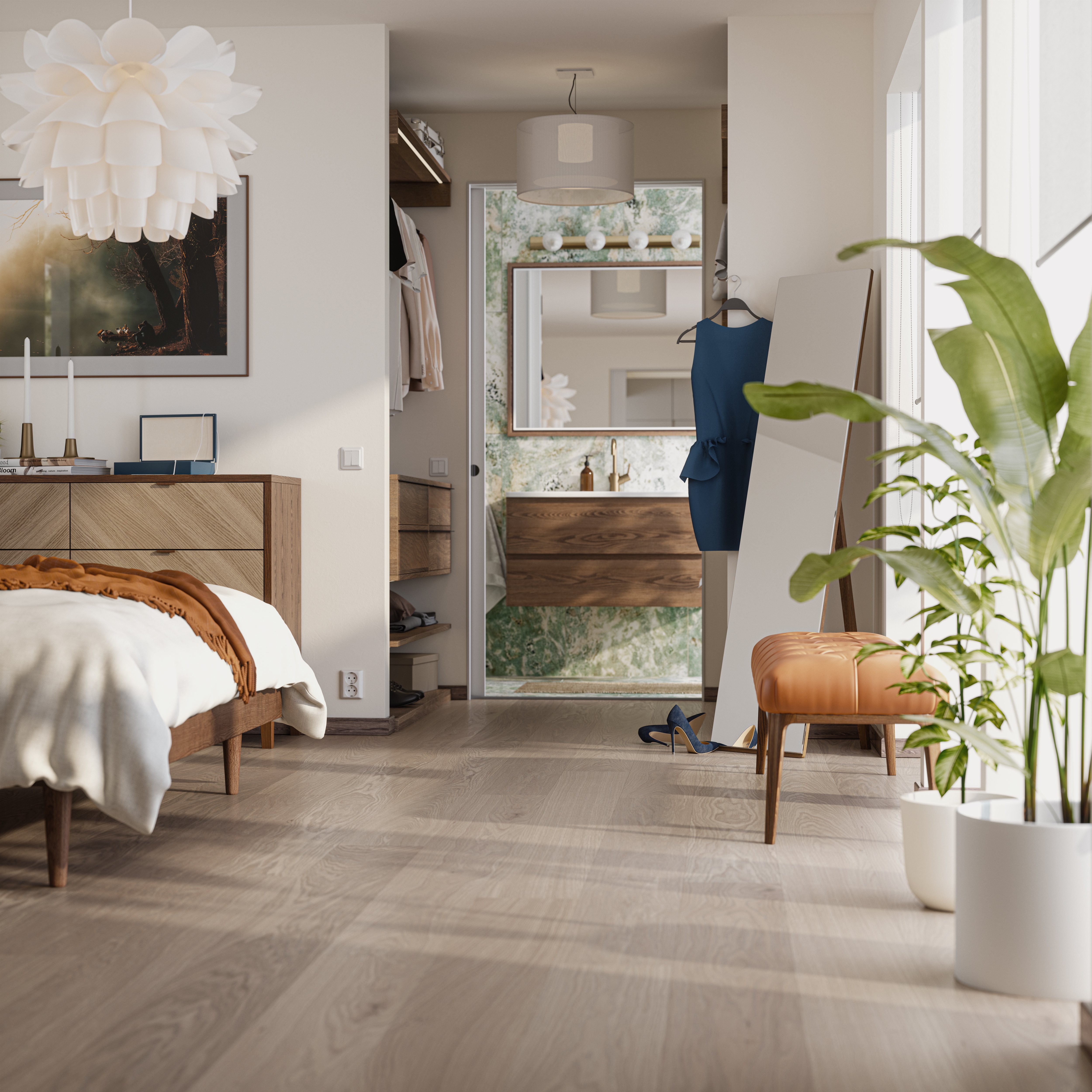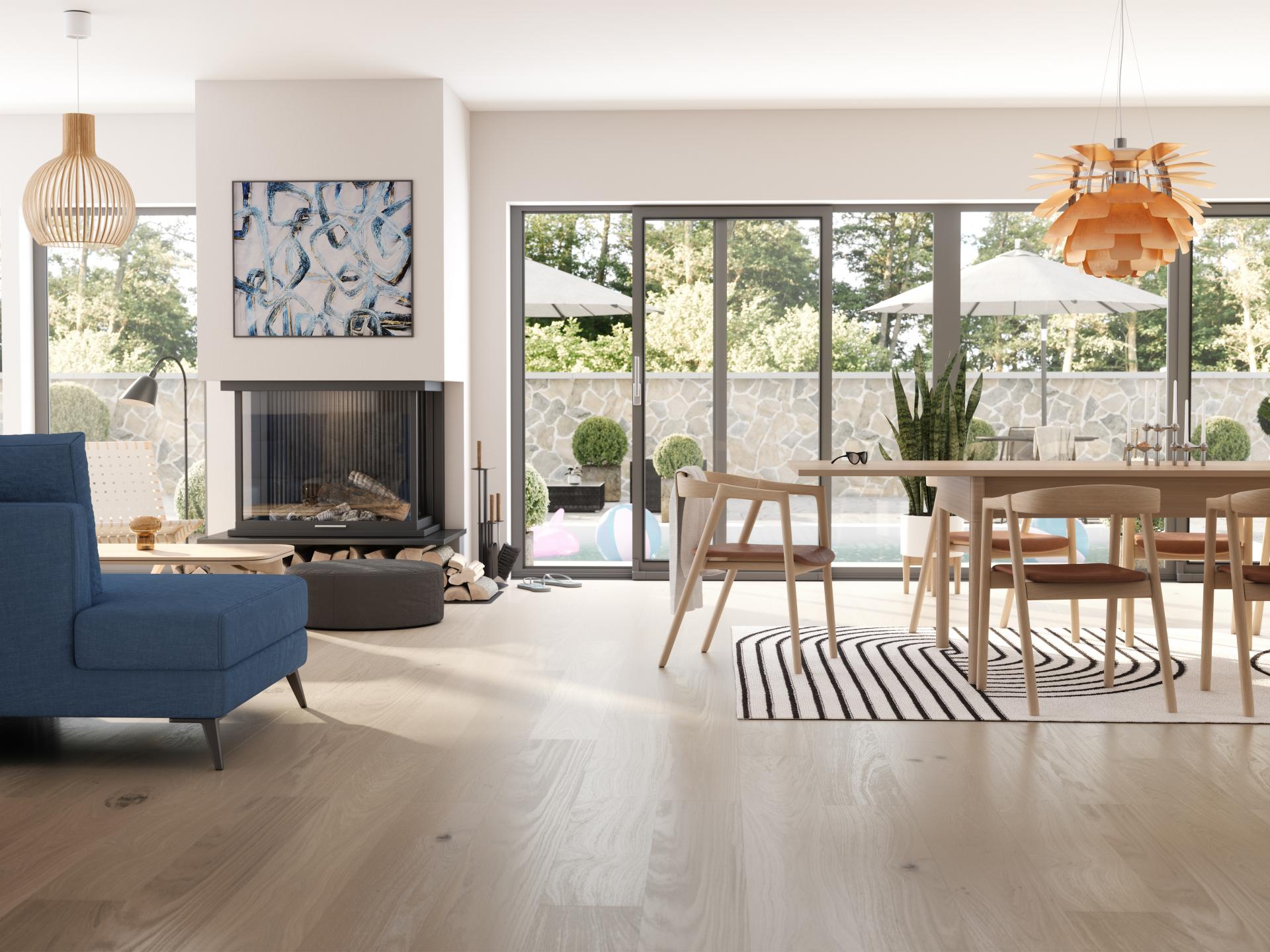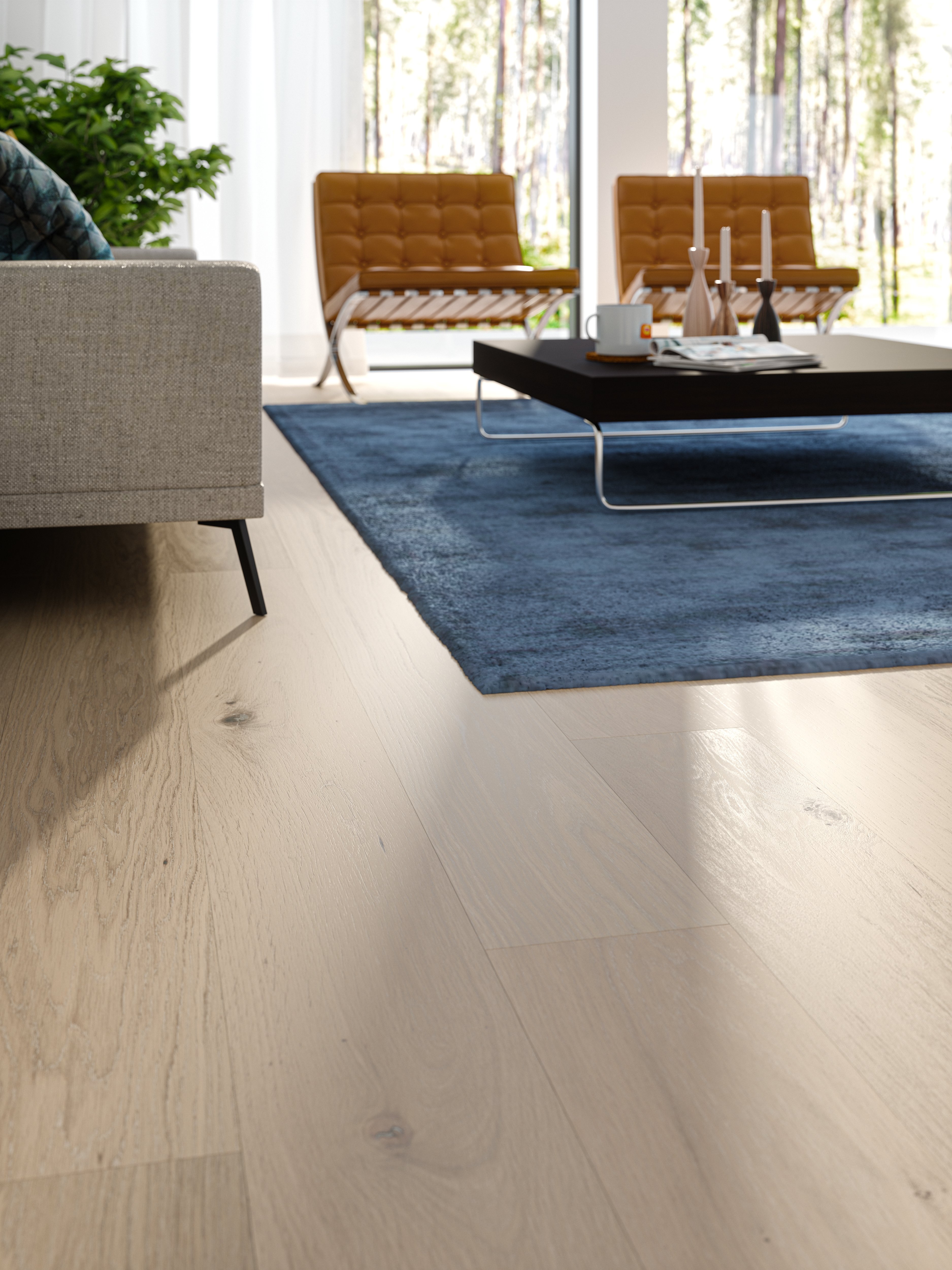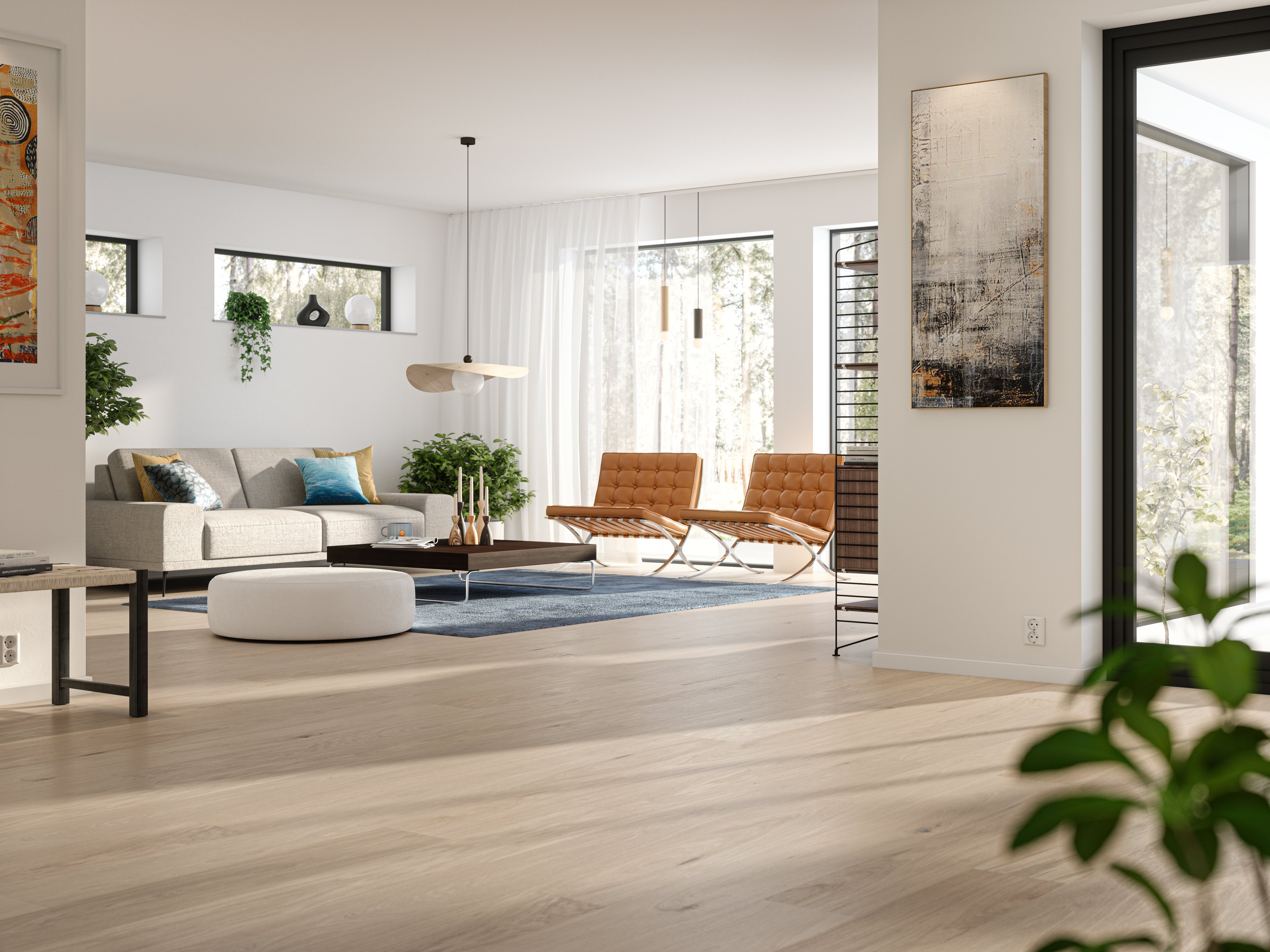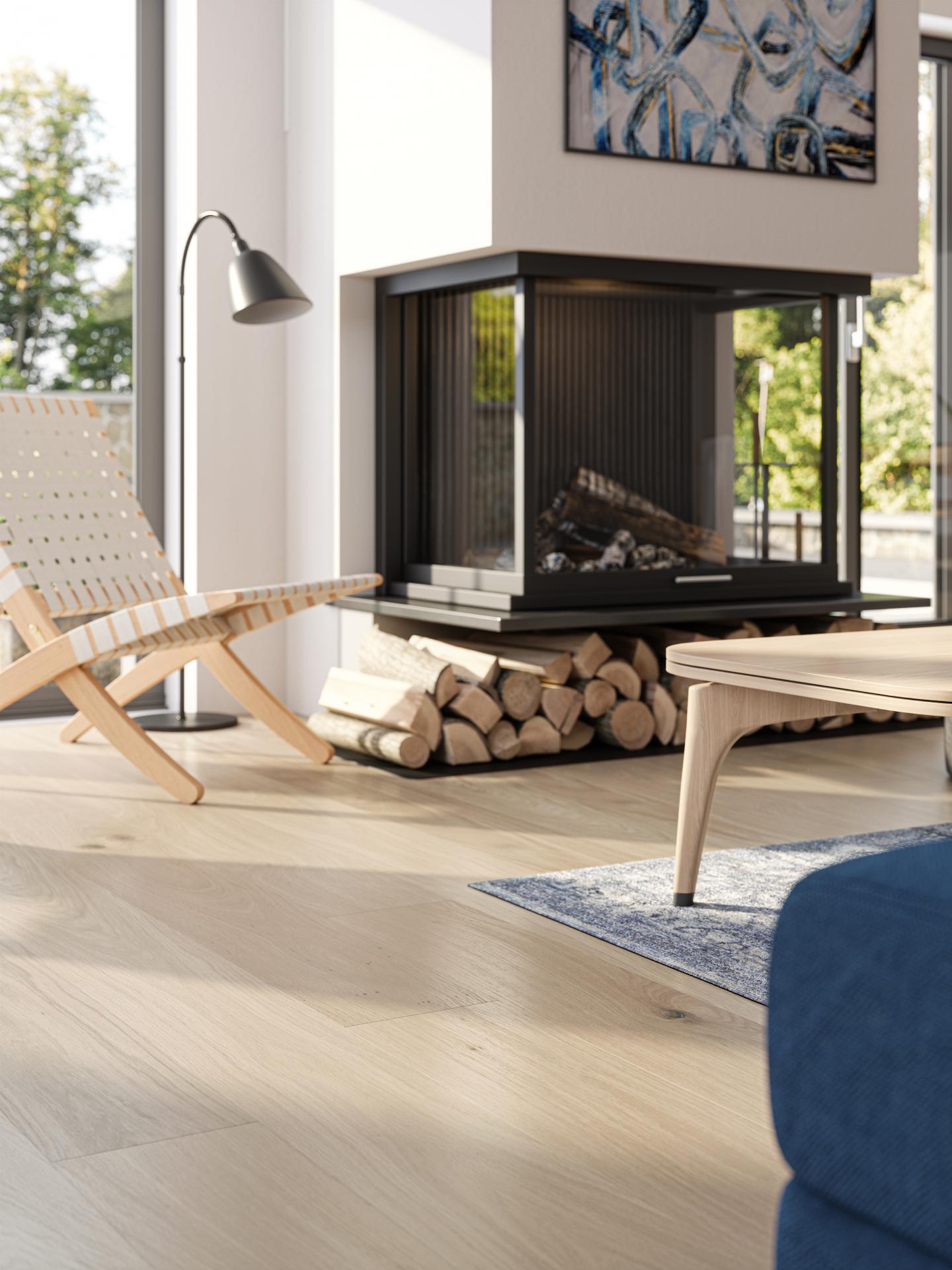The form needs to meet function in architecture, and the selection of flooring plays a key role in the overall experience and feel of a space. We catch up with seasoned architect Elli Fragaki, whose experience spans the UK, Greece, and the Middle East and is a lecturer at the School of Architecture at Heriot-Watt University.
Crafting a sensory experience
Every choice made during a project is significant, but we asked Elli what decisions stand out. “The sensory impact should not be ignored,” says Elli. “The emotions triggered by the human senses as we experience our built environments are the ones that determine whether a space is successful or not.”
Where does the choice of flooring fit in? According to Elli, the selection of floors is guided by multiple factors. “The choice depends on the context of the building,” she says. “You have to consider factors such as comfort, aesthetics, the feel of the space, and sustainable solutions, whether we are dealing with a new build or a refurbishment, the installation process, and the likely lifespan of the preferred product for its selected environment. And, of course, the budget!”
Marrying design with functionality
When asked about the key functional considerations that influence the choice of flooring for a project, Elli says: “Durability, reaction to the local weather conditions, ease and speed of installation and the time for delivery if sourcing from abroad.”
She emphasises that, aesthetically, the flooring is a key part of the interior design. “The floors define and distinguish the space,” she says. “Colour, material, size, and direction of the pattern are just a few flooring design factors that can help to compliment the architecture of a space.”
Embracing sustainability
Sustainability is an increasingly important factor in the decision-making. “The last few years in particular, I consciously try to choose and encourage my clients to go for environmentally friendly solutions,” says Elli. “Thankfully there are some amazing products out there."
What other choices need to be taken into account? “Enhancing the overall space for the users has to be seen as an all-inclusive experience; it needs to take into consideration the uniqueness of the brief, aesthetics, functionality, safety, and also, sustainability.”
Navigating challenges
On the question of how an architect ensures a project runs smoothly, Elli highlights that it’s vital to do thorough testing and adapt when making architectural decisions. Regarding any potential budget constraints, she states that quality should always be the number one factor.
When asked how to ensure a seamless transition between different flooring materials in adjacent areas, Elli admits there can be several challenges, ranging from material and aesthetic compatibility to more practical ones like height differences, safety and cost.
“Flooring is a central element in the interior design and the basis for the overall aesthetic and functionality of a space,” she says. “Particular attention needs to be given to the chosen materials, colour, texture and style to create a consistent, functional and visually pleasant result.”
From the client's perspective
The relationship between the architect and the client is a close one. “Clients and stakeholders need to be on board throughout the design and construction to avoid ‘surprises’ from any side,” Elli stresses. “The project’s goals and design vision need to be agreed by all parties from the beginning and carried through to the end to ensure quality is delivered in line with the agreed budget.”
Elli finds tools like mood boards and concept along with 3D renders, invaluable for communicating and crystallising ideas with clients and stakeholders. “Sticking to a budget and the delivery date can be very influential factors,” she says and adds: “Branding and brand alignment can also influence selections.”
In the world of architecture, where every choice makes an impact on the overall look and feel of a space, Elli’s perspective on flooring serves as a reminder that floors are about creating environments that resonate with the human experience and integrating this seamlessly with design, so that it stands the test of time.
